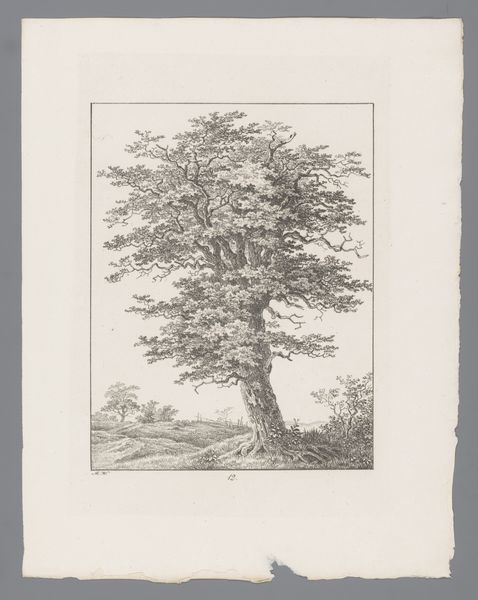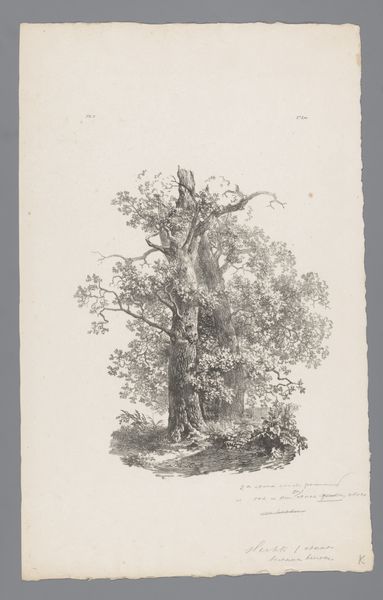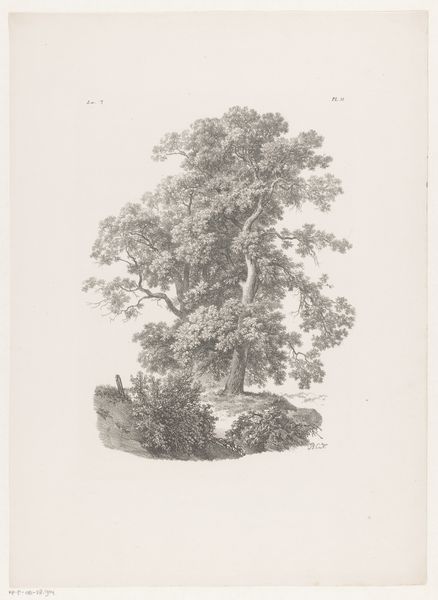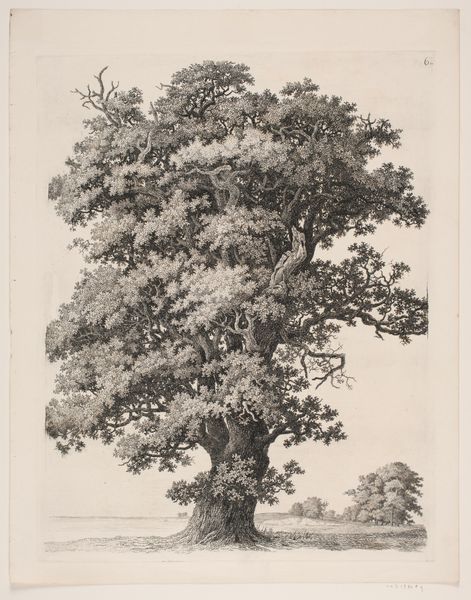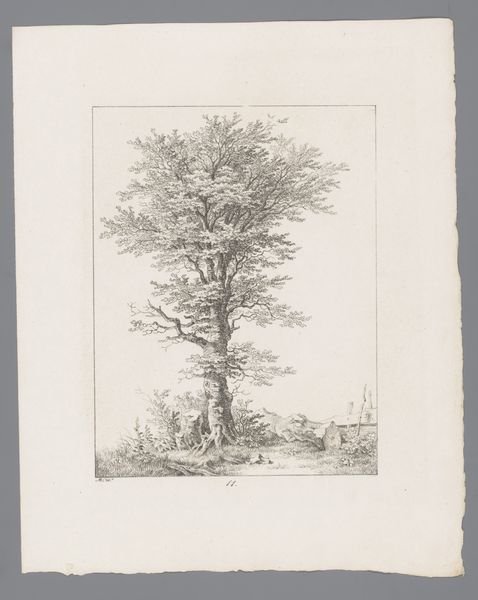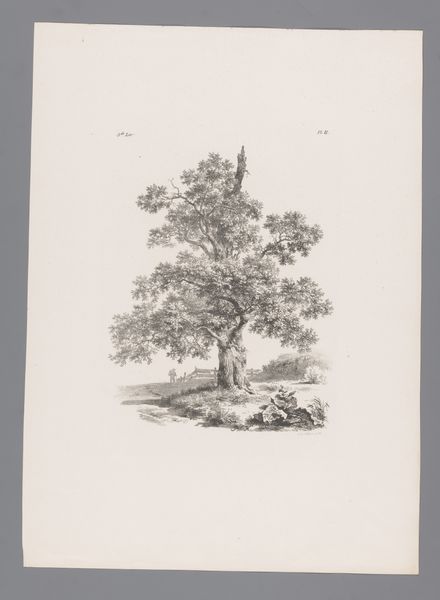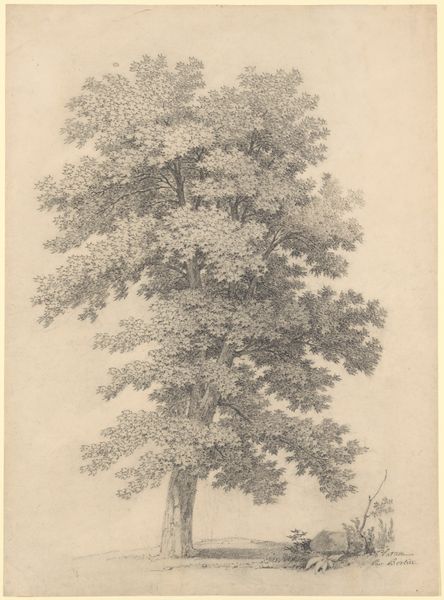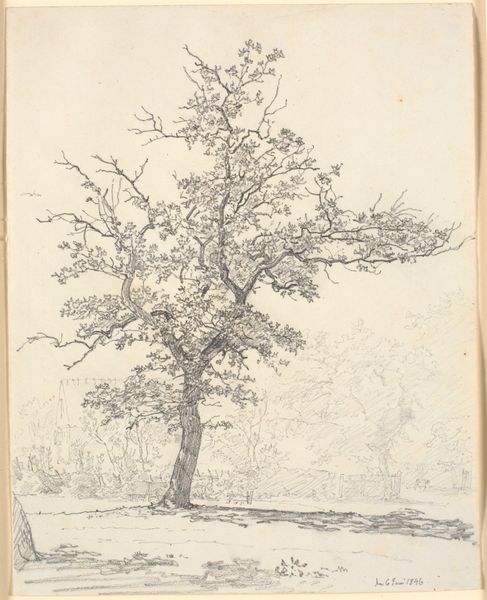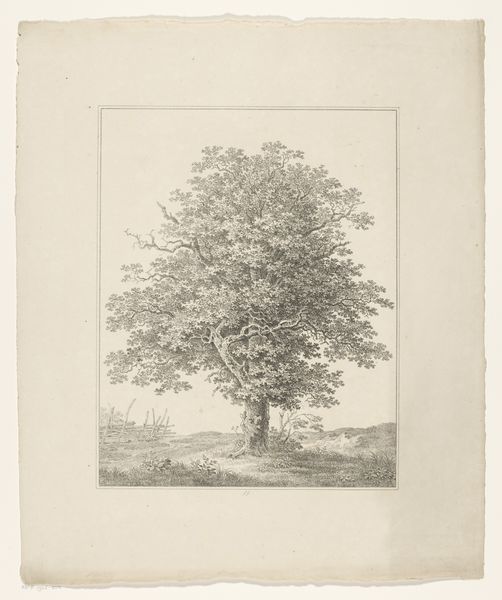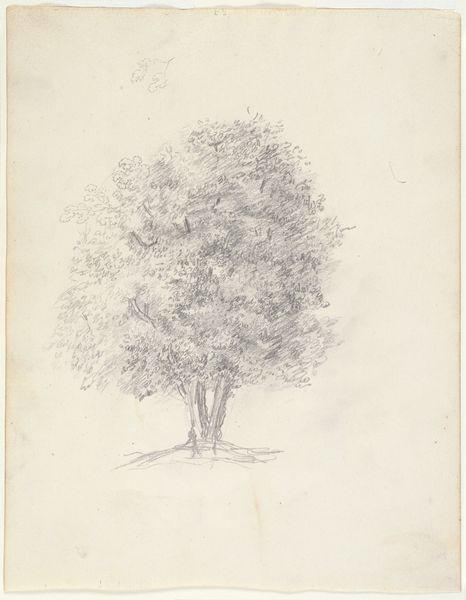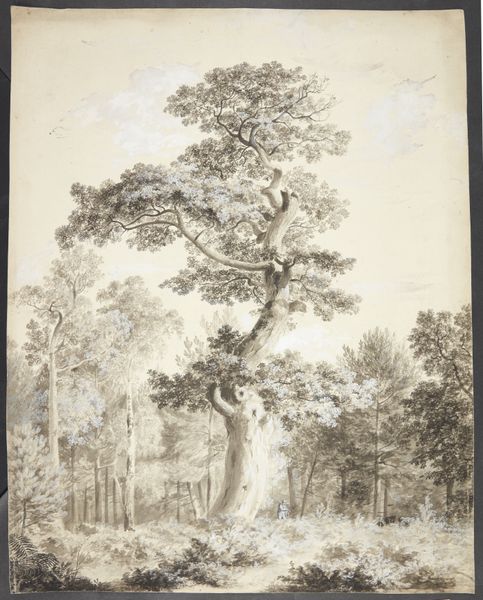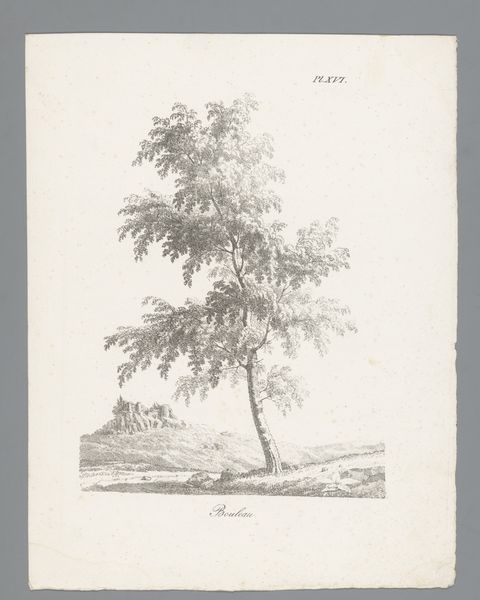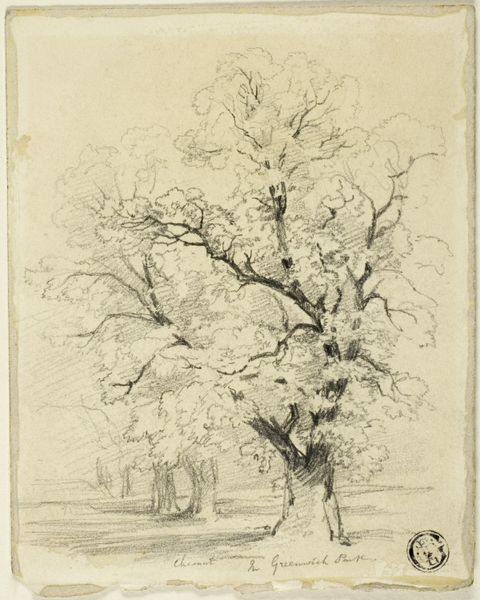
drawing, paper, ink
#
drawing
#
landscape
#
figuration
#
paper
#
ink
#
romanticism
Dimensions: height 550 mm, width 435 mm
Copyright: Rijks Museum: Open Domain
Editor: This drawing, "Oude Boom" or "Old Tree," was made with ink on paper sometime between 1826 and 1828 by Adrianus van der Koogh. I find the detail of the branches really captivating. What's your interpretation? Curator: This work exemplifies the Romanticism movement’s fascination with nature, particularly its untamed aspects. How do you think this drawing engages with the growing sense of national identity in the Netherlands during that period? Editor: That’s a good question. It makes me wonder if the artist intended for the tree to represent resilience and strength. I hadn't really thought about Dutch identity connected to it. Curator: Exactly. The period saw the rise of national museums and the canonization of Dutch masters, fostering pride in local landscapes. Consider how this seemingly simple tree study participates in constructing that national narrative, subtly encouraging a view of Dutch heritage. Editor: So, it’s not just about the tree itself, but what the tree *means* in the context of the nation's artistic and political movements? Curator: Precisely! The placement in the Rijksmuseum elevates a single drawing to an iconic symbol, tying natural beauty to Dutch identity, a choice laden with socio-political weight. Editor: I never considered that a simple drawing could carry so much cultural significance. Thank you for opening my eyes to this perspective. Curator: My pleasure. I appreciate your observation that art shapes our identity through collective narratives, not always apparent on the surface.
Comments
No comments
Be the first to comment and join the conversation on the ultimate creative platform.
